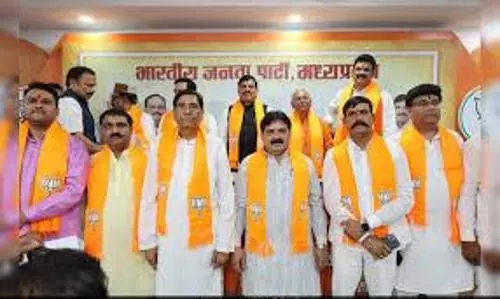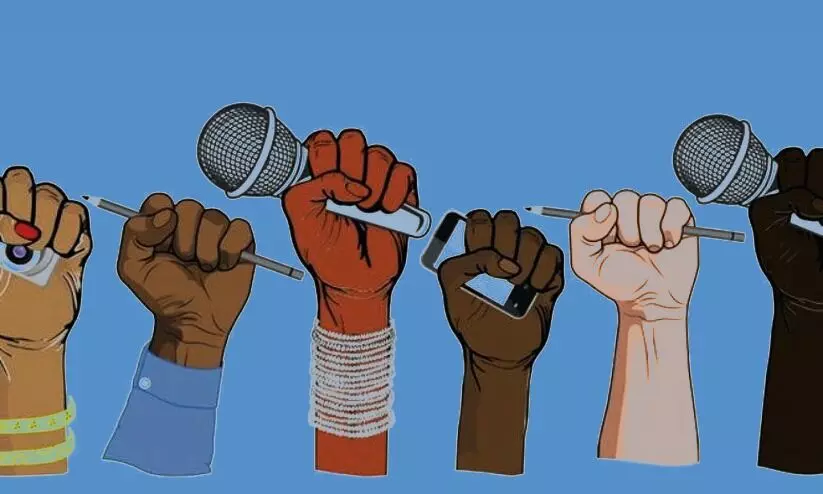
Arm-twisting the new media
text_fieldsFor the past few years, the central government have been planning to put a gag of censorship on online news portals and OTT (Over The Top) platforms. An attempt by the Centre's Information and Broadcast Ministry in 2018 had to be withdrawn at the face of stiff resistance. However, with President Ramnath Kovind signing a notification the other day, 'films and audio-visual programmes made available by online content providers', news portals, news-based programmes and film have now come under the ambit of the I&B ministry. The government excuse in support of the decision is that it is because of the digital channels transmitting programmes without any restrictions that hate propaganda and sedition gets wide uncontrolled publicity.
The government justifies that in this situation, new form of censorship is inevitable and this has got Supreme Court's approval. During the hearing of an appeal against the Supreme Court's ban on a programme spewing anti-Muslim sentiments by Sudarshan TV titled 'UPSC jihad', the appeal averring that the ban was against media freedom and freedom of expression, the highest court had asked why the government could not bring in a mechanism to monitor and check online portals. It is by cleverly using this suggestion of the Supreme Court that the Centre has initiated steps to rein in digital media. It is a paradox that the I&B ministry which today takes cover under the Supreme Court's observation for gagging new media, had stated in its response to the Delhi Court during the case of Sudarshan TV, that the channel had done nothing unlawful and had not violated programme code.
It is in this context that criticism has been raised about the central government that it is using the apex court's verdict as a cover to achieve its ulterior aim of stifling the constitutionally guaranteed freedom of expression, right to criticise the government and other democratic freedoms. Media entities and exponents of media rights have termed the clubbing of cinema – which is subject to pre-censorship – and news media in the same group and regulate them unilaterally, as heinous and shameful. It was only when the people of Jammu & Kashmir were denied internet service for a very long period that people came to realise how appalling the government's hegemony over information under the IT Act of 2000 was. The highest court, however, did not come to their rescue even with several rounds of plea. There is thus a natural apprehension that this move to regulate will lead to an obituary of new media.
Social media, which is far more accessible to ordinary citizens than legacy media, do exert considerable influence on public life. It is true that WhatsApp, Facebook and Twitter are playfields of fake news and hate posts. And the role of online media in giving global publicity to communalism, racism and terrorism, is by no means small. There are also those among the anonymous or pseudonymous users with no qualms about making even children victims of porn trade. But for all such demerits, social media are also a unique forum of freedom of opinion and expression.
In certain countries, this unfettered liberty of expression has even led to revolutionary social transformations – reason enough for many regimes to fear it. As a matter of fact, guidance is needed not for technology or media, but for those who use them, their hearts and brains and their approaches. Unfortunately, the biggest lie factories in the country are the pro-government. Parivar. Existing laws are more than sufficient to block them. A study released by the National Law University, Delhi in 2018, also had illustrated that the country has enough laws at present to bring under control online portals who spread animosity.
On hearing that the Centre was proceeding to make new rules, the Internet and Mobile Association (IAMA) had submitted a draft for new code and proposals in early September this year. But the I&B ministry chose to ignore it in toto. The Modi government aims at media and information entities that perform as government's megaphone, along the lines of Prasar Bharati and Doordarshan. The regime dreams that through this it can create an India with no space for dissent. The present government plan is to cage the new media and mediapersons by slapping additional controls. Unless the people of the country succeed in defeating the bid to end media freedom and the right to freely express opinions, they will be destined to hear only the victims' moan and groan.
























